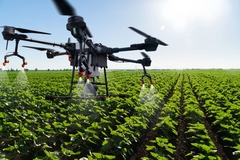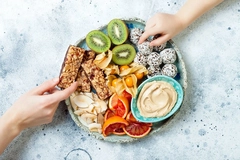UK food inflation stabilizes as some products still record price hikes
15 Aug 2024 --- UK food and non-alcoholic beverage inflation remained steady at 1.5% in July, the same as the previous month and the joint lowest annual rate since October 2021, according to official figures. However, products like olive oil, cocoa and powdered chocolate still recorded big price increases.
The annual rate is down from 14.9% in July last year and the high of 19.2% in March 2023, the highest annual rate in over 45 years.
The Office for National Statistics (ONS) says food prices have been “relatively stable” since summer 2023, compared with sharp rises over the last year. Alcohol also remained relatively unchanged in July, reaching 7.2%, compared to 7.3% the previous month.

Overall inflation — the measure of how quickly prices have risen over the past year — rose to 2.2% last month, just above the Bank of England’s target of 2%. The bank predicts the rate will increase to around 2.75% toward the end of the year and fall again after that.
Four of the 11 food and non-alcoholic beverage classes contributed downward to the change in the annual rate between June and July. These include bread and cereals, fish, vegetables and mineral waters and soft drinks. Upward contributions came from a combination of milk, cheese, eggs, fruit and sugar, jam and honey.
“Four classes remained the same. The products in this division that provided a notable downward contribution to the change in numbers included fresh orange juice, sponge cake, canned tuna, and cheese spread,” according to the ONS.
Upward contribution to annual inflation rate
Packs of individual cakes, sliced pre-packed ham, milk and large chocolate bars also provided a notable upward contribution to the change in the annual figures.
Prices fell the fastest for frozen seafood, jams and marmalades, by 8.1% and 5.4%, respectively, while olive oil, cocoa and powdered chocolate and lamb and goat recorded the highest rises, at 37.5%, 19.6% and 12.3%, respectively.
Balwinder Dhoot, director for sustainability and growth at the Food and Drink Federation (FDF), says the latest numbers are positive news.
 Annual food inflation is down to 1.5% from 14.9% in July last year.
Annual food inflation is down to 1.5% from 14.9% in July last year.
“We’re pleased that as pressures across the food supply chain ease, food and drink price inflation continues to stabilize. While energy and global commodity prices remain elevated due to a series of shocks, including the war in Ukraine and ongoing geopolitical uncertainty, there are strong signs that the industry is turning a corner,” he says.
Increase food industry investment
Around 85% of food manufacturers expect to maintain or increase investment levels over the coming year after a 30% decline since 2019, according to the FDF.
“Our industry plays a vital role in every community and the local and national economy. As well as providing job opportunities and skills development it underpins the nation’s food security. Continued investment is key to safeguard and enhance the resilience of our food supply, tackle climate change and health inequalities, and boost jobs and growth,” adds Dhoot.
The British Retail Consortium also believes the latest figures are cause for optimism. Kris Hamer, director at the organization, says: “Food inflation was unchanged, after falling for the preceding 15 months, as increasing commodity costs over 2024 began to filter into prices, however key ingredients like rice and olive oil did see a welcome price drop on the previous month.”
COVID-19, which caused product shortages across the world, Brexit and ongoing geopolitical uncertainties have all contributed to high food prices in recent years, with consumers and suppliers feeling the impact.













